Parvathi Ganesha of Hampi, Karnataka
Kadalekalu Ganesha is one of the largest statues of Lord Ganesha that exists in the southern part of India. The shrine housing the statue of Kadalekalu Ganesha is situated on the slope of the Hemakuta Hill in Hampi. It is a remarkable monolithic statue and one of the most popular tourist sites in Hampi.
Hampi -“The Lost World” or “The Lost Empire “or “The World Forgotten” whichever way you call it the place is replete with structures of amazing architectural beauty that defies description. Had been to Hampi to see the magnificent structures and the architecture of the Vijaynagara Empire now spread over an area of approximately 350. sq. kms. It would be impossible to cover this place in a matter of a few days that we spent there. This is a World Heritage site and thanks to the Archeological Survey of India (ASI) who is maintaining and guarding this place assiduously. Had it not been for the ASI many of the icons and structures world have vanished!
Hampi is also a place of mythological importance. This is the abode of Lord Virupaksha (another form of God Shiva – Virupaksha – the one with the oblique eyes) and his consort Pampadevi or Parvati. God Shiva was the presiding deity of the Vijaynagara Kings. It is believed that God Shiva was in penance here. Parvati wanted to marry Him and felt that the only way she could get Him would be thru penance. Hence she also sat in penance and when God Shiva came to know of this he agreed to marry Her. It is believed that the location of their marriage is the location of the Virupaksha temple.
The Vijaynagara Kings were not only devotees of God Shiva but paid equal importance to God Vishnu. This is evident from the many shrines that they built for Lord Ram and Krishna. Their Royal Emblem was Varaha – an incarnation of God Vishnu. Vishnu in the form of Varha destroyed the demon Hiranya who had captured the Earth. This emblem seems to be commensurate with their goal.
While the Kings of the various dynasties contributed to the growth and at times to the downfall of the Vijaynagara Empire the period reigned by the Tuluva King – Krishnadevaraya (The Tuluva Dynasty reigned between 1491 to 1570) saw the maximum growth in art, architecture and expansion of the Vijaynagara Empire. Despite Krishnadevaraya the Vijaynagara Empire suffered extensive damages the hands of invaders and many a shrine here as well as elsewhere in India were severely damaged or brought down.
We owe to this great King for preserving the Hindu culture, architecture and monuments as also for protecting, building and renovating the various shrines in South India. They built these magnificent structures with mind boggling architectural details in hard rock for us to see and admire. How they managed to carve out such intricate details in hard rock with the then existing facilities will forever remain a mystery. These are the monuments which can never be built again or emulated. But for the Vijaynagara Kings our temples especially in South India would have disappeared long ago.
As you drive round Hampi you will not miss the endless stretches of huge hard rock formations of odd shapes and sizes some breathtakingly huge and in curious formation. In fact the presence of the rocks on one side and the mighty Tungabhadra on the other made an ideal haven of safety for the Vijaynagara Empire and one of the reasons for their presence here. They now stand in mute testimony to this empire that was there once upon a time.
There are more than 45 excavated sites there to see now and many more are under various stages of excavation, study and documentation. Therefore to see this place and appreciate the architecture would take several months. In fact we came across people who have been staying there for several months. Nonetheless, we have covered as much as possible during our stay there and photographed some of the structures. This is the first album that I am presenting and therefore in all fitness would like to open my account with a short narration with photographs of two Ganesh temples known as “Sasivekalu” (mustard seed) Ganesh and “Kadlekalu” (Bengal gram seed) Ganesh.
As one drives into Hampi from Hospet these are first two temples that would appear before you.
Sasivekalu Ganesh Pictures
Elevation of the temple Sasivekalu Ganesh temple. The entire temple in the form of an open pavilion including the statue is constructed out of the locally available hard rock.
The magnificent statue of Sasivekalu Ganesh.
This is a giant statue of God Ganesh about 8 feet tall and carved out of a single block of solid rock. The tummy of Ganesh resembles a mustard seed and hence in the local language He is called “Sasivekalu” (Mustard seed) Ganesh.
If you closely observe the photograph you will see that a snake has been tied around his tummy. It is said that he ate so much that he caught a snake that was nearby and tied it around his tummy to prevent it from bursting!
He has four hands. The right hands hold the goad and the broken tusk while the left hands hold the pasha (noose) and a sweet ball – “Modak” as it is popularly known and his favourite food.
What a beauty. The love of a mother for her son. Here the sculpture has depicted Ganesh seated on the lap of Parvati. What an imagination and the perfect geometric proportions. Please note that all this has been done from a single stone. Imagine the planning and the efforts that would have gone into making this masterpiece.
An environmental photograph of the Sasivekalu Ganesh temple and the adjoining hill and the structures under a beautiful blue sky.
Kadlekalu Ganesh Pictures
This huge statue is entirely monolithic and is about 15 feet tall and located in pillared hall. The hall has pillars with intricate carvings. In fact one of the interesting features of the Vijaynagara architecture is to have interesting and intricate carvings on stone columns. Unfortunately the statue suffered damages at the hands of the invaders.
Close up of Kadlekalu Ganesh showing the damage to one of the tusks Damage to one of the fingers.
The Mantapa gives a view of the environment and affords a panoramic view of the surroundings. Between the pillared hall and the boulders is the majestic Gopura of the famous Virupaksha Temple (dedicated to God Shiva). One gets the feeling as if the Gopura is piercing its way out of the rocks!
The unique name of Kadalekalu Ganesha, Hampi
The towering statue of Kadalekalu Ganesha has a height of 4.6 metres (15 feet). The giant statue was carved out of a single huge boulder. The belly of Ganesha has been chiselled in such a manner that it resembles a Bengal gram (known as Kadalekalu in the local language). Hence, the statue has been given the name of Kadalekalu Ganesha. It is one of the largest statues that exist in Hampi.
The attraction of Kadalekalu Ganesha Temple, Hampi
The temple of Kadalekalu Ganesha is a beautiful stone structure. The temple hall is decorated with tall and slender granite pillars standing in the hall. The pillars are decorated with various mythological characters and themes carved out on them.
The cubical pillars are constructed in the typical Vijayanagara style of architecture. The open hall of the temple leads to the inner sanctum where the tall statue resides.
The amazing view from Kadalekalu Ganesha Temple, Hampi
Being situated on the slope of the Hemakuta Hill, the temple presents a mesmerizing view of the surroundings. Visitors can enjoy picturesque views of the Hampi Bazaar and the Matanga Hill while standing in the hall of the Kadalekalu Ganesha temple.
The calm ambiance of the temple makes it a wonderful place to spend some peaceful moments admiring the beauty of the temple in particular and the surroundings in general.
How to reach Kadalekalu Ganesha Temple
Kadalekalu Ganesha Temple is one of the most visited destinations in Hampi. The location of the temple can be easily accessed by visitors from all parts of the ruined town.
By Air
Hampi has no airport of its own. Visitors can reach Hampi by air by taking a flight to the nearest airport situated at Bellary. The Bellary airport stands at a distance of about 64 km from Hampi. The airports at Belgaum (190 km) and Bangalore (353 km) are other options for you to reach Hampi by air. There are other means of transport to reach Hampi from the airports.
By Rail
There is no railway station in Hampi. The nearest railway station is located at the town of Hospet. Hampi can be easily reached from Hospet as there are frequent buses that ply between the two towns. There are also other local means of transport that connect Hospet to Hampi.
By Road
Hampi is well connected by the road network and can be accessed from several towns and cities by road. There are a number of buses that connect Hampi to the nearby places. Private cars and vehicles can also be hired from Bangalore or Mysore to reach Hampi.
Quick Notes
- Timing: Open on all days of the week from 6:00 AM to 6:00 PM
- Entrance Fee: No entry fee needed
- Photography: Allowed
- Visit Duration: 1 hour
- Best time to visit: From October to February
You may also like
Baby Ganesha | HD Wallpapers |
Aagman Pictures | Visarjan Pictures |
Fantasy Ganesha | Official Wallpapers |
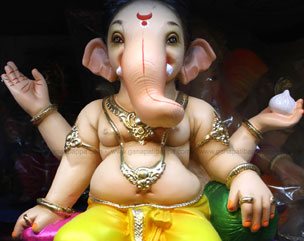
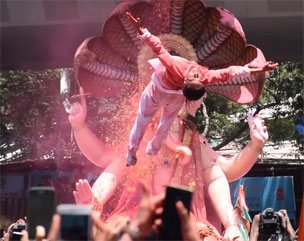
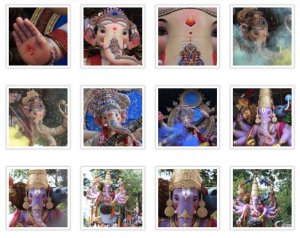
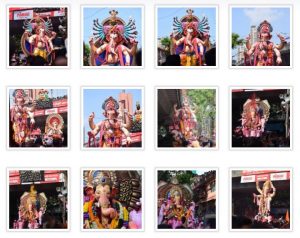
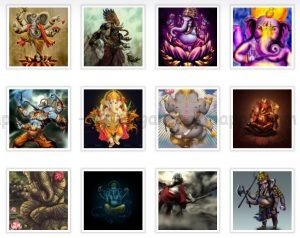
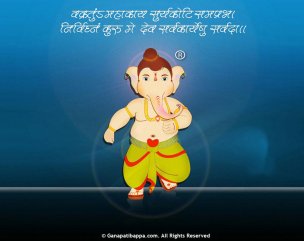





About the author